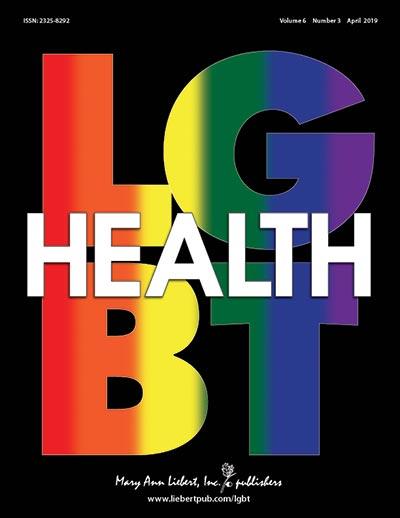
Credit: (c) 2019 Mary Ann Liebert, Inc., publishers
New Rochelle, NY, April 29, 2019–In a new study among adolescents in the United States, lesbian, gay, and bisexual adolescents were more likely than heterosexual adolescents to be polysubstance users versus non-users across multiple classes of use: experimental users, marijuana-alcohol users, tobacco-alcohol users, medium-frequency three-substance users, and high-frequency three-substance users. In general, sexual orientation identity differences in polysubstance use class membership were larger for females, especially bisexual females, than for males. The findings regarding sexual orientation disparities in polysubstance use are reported in an article published in LGBT Health, a peer-reviewed journal from Mary Ann Liebert, Inc., publishers. The article is available free on the LGBT Health website until May 30, 2019 at https:/
Robert W.S. Coulter, PhD, MPH and colleagues from the University of Pittsburgh and UPMC Children’s Hospital of Pittsburgh (PA), Georgetown University Medical Center (Washington, DC), and the University of Maryland (College Park) analyzed 2015 Youth Risk Behavior Survey data from almost 120,000 adolescents living in 19 U.S. states. In the article, entitled “Latent Classes of Polysubstance Use Among Adolescents in the United States: Intersections of Sexual Identity with Sex, Age, and Race/Ethnicity,” the researchers estimated latent classes of concurrent polysubstance use characterized by use of alcohol (including heavy episodic drinking), cigarettes, cigars, smokeless tobacco, and marijuana. They then tested for sexual orientation identity differences in polysubstance use class membership and whether sex, race/ethnicity, and age moderated these differences.
“The finding that patterns of polysubstance use vary systematically across sexual minority subgroups on the basis of sexual identity, sex, race/ethnicity, and age is important as it suggests that subgroup-specific interventions are needed to optimally address the sexual minority disparity in polysubstance use,” states LGBT Health Editor-in-Chief William Byne, MD, PhD, Columbia University, New York, NY.
###
Research reported in this publication was supported by the National Institute on Drug Abuse (F31DA037647), the National Center for Advancing Translational Sciences (TL1TR001858), the National Institute on Alcohol Abuse and Alcoholism (F32AA023138), and the Eunice Kennedy Shriver National Institute of Child Health and Human Development (P2CHD042849). The content is solely the responsibility of the authors and does not necessarily represent the official views of the National Institutes of Health.
About the Journal
LGBT Health, published 8 times a year online with open access options and in print, facilitates and supports the work of researchers, clinicians, academics, and policymakers to address barriers to care and advance efforts to improve the health, well-being, and clinical outcomes of all LGBT and other sexual and gender minority persons. Led by Editor-in-Chief William Byne, MD, PhD, Columbia University, New York, NY, the Journal spans a broad array of disciplines and publishes original research, review articles, clinical reports, case studies, and legal and policy perspectives. Complete tables of content and a sample issue may be viewed on the LGBT Health website.
About the Publisher
Mary Ann Liebert, Inc., publishers is a privately held, fully integrated media company known for establishing authoritative peer-reviewed journals in many promising areas of science and biomedical research, including Transgender Health, AIDS Patient Care and STDs, AIDS Research and Human Retroviruses, Journal of Women’s Health, and Population Health Management. Its biotechnology trade magazine, GEN (Genetic Engineering & Biotechnology News), was the first in its field and is today the industry’s most widely read publication worldwide. A complete list of the firm’s more than 80 journals, books, and newsmagazines is available on the Mary Ann Liebert, Inc., publishers website.
Media Contact
Kathryn Ryan
[email protected]
Original Source
https:/
Related Journal Article
http://dx.




